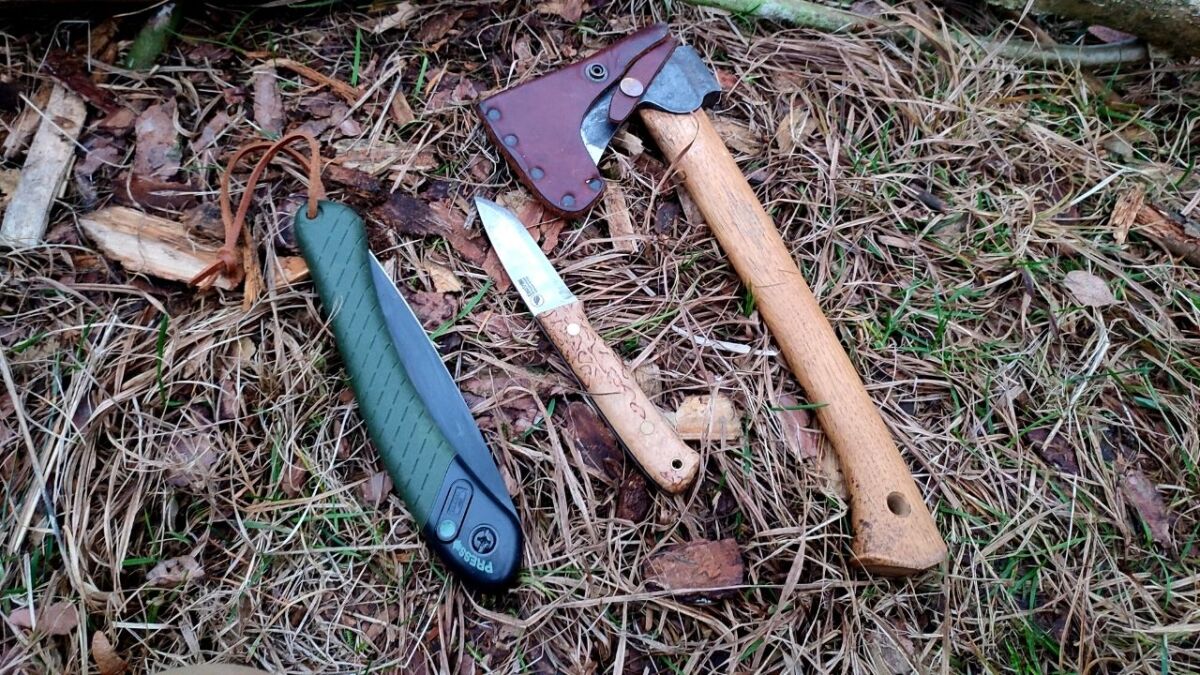
Axe or Saw? My personal compass for your ultimate forest tool
👉 The key facts from this guide
- The choice between an axe and a saw for your wilderness tour depends on your plans, the environment, and your skills – there's no one-size-fits-all answer!
- The axe is great for splitting wood and rough shaping, offers versatility and a traditional feel, but is heavier and requires practice.
- The saw excels in efficiency when cutting to length, precision, low weight, and is often safer, but cannot split and is less suitable for shaping.
- For splitting thick wood and longer stays, a robust axe would be the choice, but for most light tours, the folding saw is the absolute favorite.
- The ideal solution? A combination of a folding saw and a robust knife, complemented by a small axe if you really need to split a lot.
- Try both and consider what you need most often – find your personal, perfect tool for your adventures!
Imagine packing your backpack for the next wilderness adventure.
Space and weight are limited, every decision counts. And then you face this question that has made many a woodsman and bushcrafter ponder:
Should I take the axe or rather the saw? Or perhaps even both?
I can tell you, I've asked myself this question countless times!
There is no universally correct answer, as the choice heavily depends on your plans, the environment, your skills, and your personal preferences.
But as a wilderness mentor, I want to share my thoughts and experiences with you today, to illuminate the pros and cons of both tools and help you make the best decision for your situation.
At the end, you should be able to answer the question yourself: What would I take with me into the wilderness – an axe or a saw?
The Eternal Duel: Axe vs. Saw – A Look at the Contenders
Before we go into detail, let's briefly characterize the two tools:
The Axe: Power, Versatility, and Tradition
The axe is one of humanity's oldest tools. It embodies power, directness, and a certain archaic elegance.
- Typical representatives for us woodsmen: From a small survival axe or hatchet to a medium-sized felling axe.
- Its domain: Felling smaller trees, limbing, splitting wood (batoning with a knife is an option, but an axe is often more efficient and gentler on the material for this), rough carving, creating notches for bushcraft constructions.
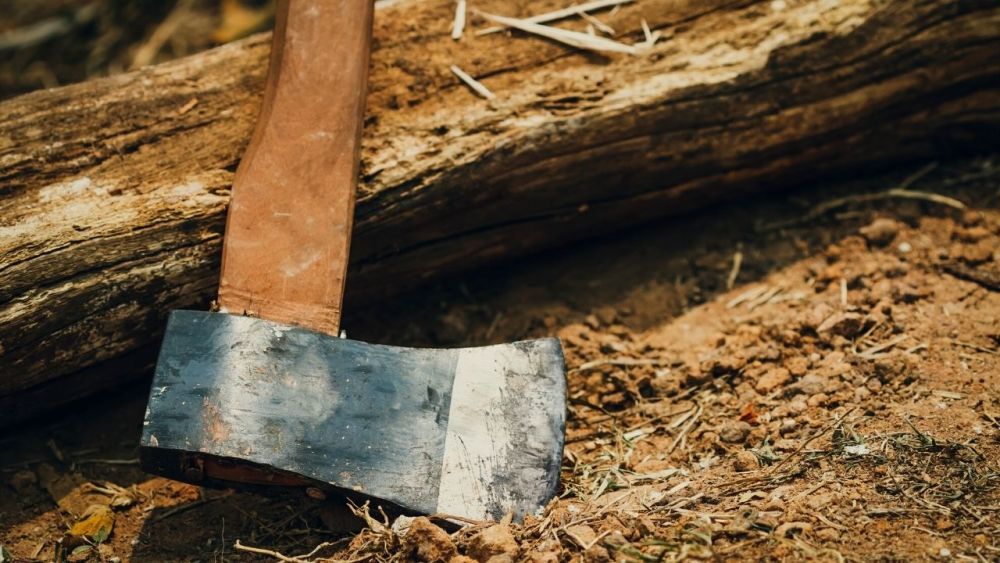
The (Folding) Saw: Precision, Efficiency, and Lightness
The modern (folding) saw is a marvel of efficiency. It's often lighter, more compact, and allows for more precise cuts.
- Typical representatives for us: Robust folding saws with a lockable blade, sometimes even bow saws for larger work at base camp.
- Its domain: Fast and energy-saving cutting of branches and smaller logs for firewood or building material, clean cuts for more precise connections, often safer to handle for the inexperienced.
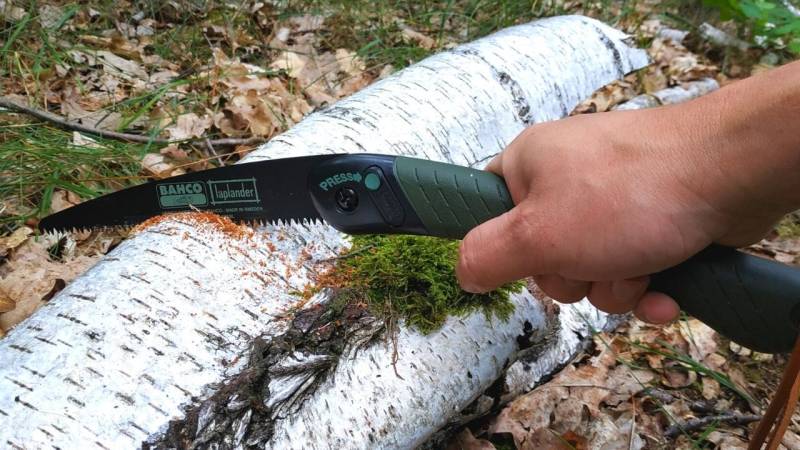
Axe or Saw? The Pros and Cons in Direct Comparison
I have used and come to appreciate both tools in countless situations. To make your decision easier, let's take a closer look at their respective strengths and weaknesses:
The Axe: What speaks for it?
- Pure Splitting Power: When it comes to splitting firewood, a good axe is unbeatable. I love that satisfying "clunk" when a thick log is split with a clean blow!
- Versatility in Shaping: With an axe, you can not only fell and split but also roughly shape wood, carve points on stakes (e.g., when building a tripod), or cut notches for sturdy connections.
- Robustness: A high-quality axe is extremely durable and can withstand rough handling.
- "One tool for everything" (conditionally): In some situations, it can serve as a hammer substitute or for driving in pegs.
- Tradition and Feeling: For many, the axe simply belongs to the image of the woodsman. There's something about working in the forest with a sharpened axe – it connects me with old craft traditions.
The Axe: Where are its limits?
- Weight and Size: Axes tend to be heavier and bulkier than folding saws, especially if you want effective splitting action.
- Safety and Practice: Handling an axe requires practice, concentration, and respect. A slip or a missed blow can cause serious injuries. In my courses, I always emphasize the importance of safe working techniques! One should master the most important axe skills.
- Precision in Cuts: For fine, clean cuts (e.g., to cut boards to length), the axe is less suitable than a saw.
- Effort for Felling: Felling trees (even smaller ones) with an axe can be very strenuous.

The Saw: What speaks for it?
- Efficiency in Cutting to Length: A good saw often cuts through wood amazingly quickly and with less effort. I'm always impressed how quickly I can prepare a pile of firewood with my Bahco Laplander folding saw.
- Precision: Saw cuts are clean and straight, which is an advantage for many construction projects.
- Weight and Pack Size: Folding saws are generally significantly lighter and more compact than axes and fit into any backpack. This is a huge advantage when every gram counts.
- Safety (often for beginners): Many find handling a saw more intuitive and less dangerous than an axe, as the movement is more controlled.
- Less Disturbance: Sawing is often quieter than chopping with an axe, which can be an advantage in some situations.
The Saw: Where are its limits?
- No Splitting Action: A saw cannot split wood. For this, you would additionally need wedges and a striking log (or an axe or a sturdy bushcraft knife for batoning).
- Limited Shaping: For rough shaping or carving notches, a saw is not the right tool.
- Saw Blade Sensitivity: Saw blades can bend or break with improper handling (getting stuck, too much pressure).
- Dependence on Blade Length: The maximum thickness of the wood to be sawn is limited by the length of the saw blade.
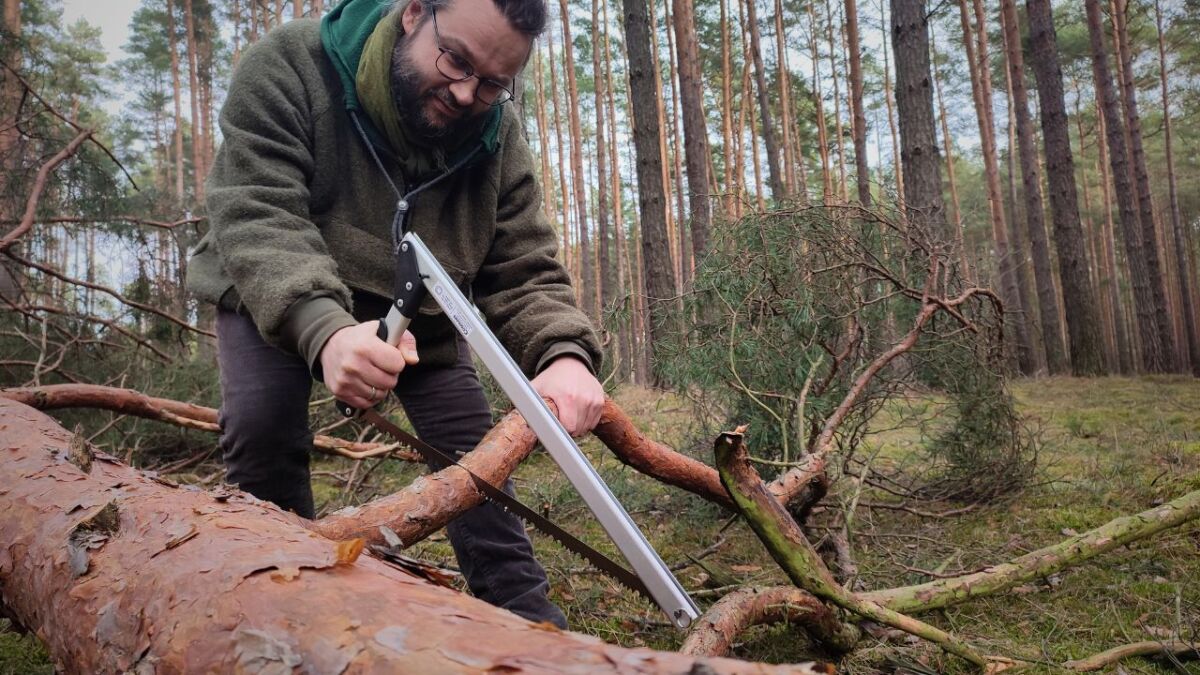
My personal decision: What would I take with me?
That's the big question, isn't it? And my answer is – as so often in life – a clear: It depends!
If I had to choose ONLY ONE tool and knew I would stay in an area longer and also had to split thicker wood (e.g., for a lasting fire that burns all night), my choice would probably fall on a small but robust universal axe or a good hatchet.
The versatility in splitting and rough shaping often gives me the decisive advantage, even if cutting wood to length is more laborious.
BUT, and that's a big But: In most situations, especially when I want to travel light or know that I'll primarily be processing firewood up to arm thickness, my folding saw is my absolute favorite and constant companion.
It is light, efficient, and incredibly practical. For the quick gathering of wood for a campfire or the construction of a simple Bushcraft Shelter, it is often unbeatable.
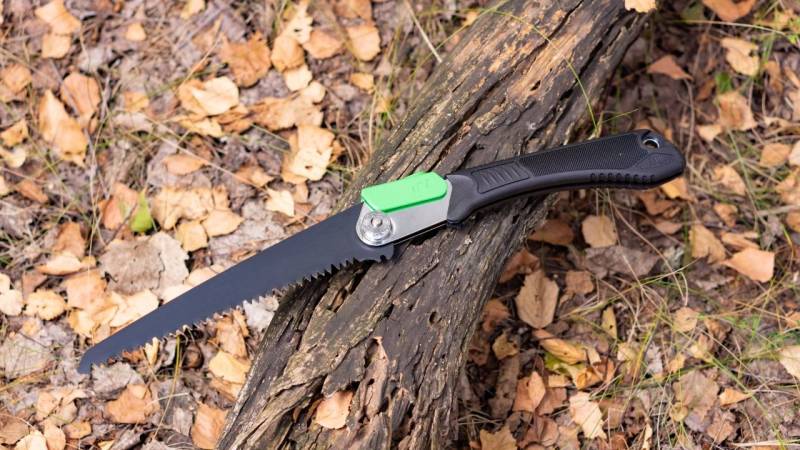
The ideal combination: If possible, both!
If weight and space allow, the combination of a good folding saw and a robust knife (that can also be used for batoning) is often the best solution for most scenarios for me.
The knife handles many carving and fine splitting tasks, the saw efficient cutting to length. A small, light axe can then perfectly complement this combination if splitting is truly necessary.
Think about your needs: Find YOUR perfect forest tool
Ultimately, you have to find out for yourself which tool or combination best suits you and your adventures. Consider:
- What are my most common tasks in the forest? (Making firewood, building shelters, carving...)
- What kind of environment am I mostly in? (Dense forest with a lot of deadwood, open terrain...)
- How important are weight and pack size to me?
- What skills do I already possess in handling tools, or what skills do I want to learn?
- What simply feels "right" to me? Sometimes it's also a gut feeling which tool makes you feel most comfortable and safe.
My Tip: Try both! Maybe borrow an axe or saw from a friend, attend a Bushcraft Course or a Survival Training, where you learn how to use various tools.
Only through your own experience will you find out what the best compromise of functionality, weight, and security is for you.
Whether you choose an axe, a saw, or a combination: Learn how to use it safely and respectfully. A good tool is an extension of your hand and your will – but only if you know how to wield it.
I hope these thoughts help you with your decision. And now I'm curious:
What is your favorite and why? You are welcome to write it in the comments!


Author of the guide
Martin Gebhardt
Hey, I'm Martin. On my blog, you will learn the basics and numerous details about living in the wild. I think survival, bushcraft and the good life in nature are the keys to happiness. Find me here on Instagram or on YouTube. You can find more about my mission on the About Me page.
Was this guide helpful?
12 people found this guide helpful.
5.00 out of 5 points (12 Ratings)
Comments (0)
This post may contain affiliate links. So if you click on the links and make a purchase, I will receive a small commission at no additional cost to you. Click here, to learn more about it.


